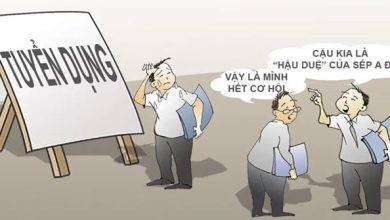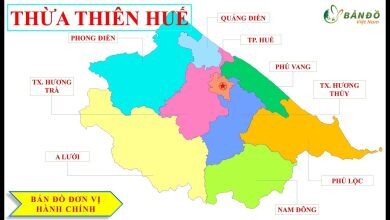1 week ago
Bạn đang xem bài: 91 bài tập trắc nghiệm về điện tích, điện trường
1 week ago
Bạn đang xem bài: 91 bài tập trắc nghiệm về điện tích, điện trường
1 week ago
Bạn đang xem bài: 91 bài tập trắc nghiệm về điện tích, điện trường
1 week ago
Bạn đang xem bài: 91 bài tập trắc nghiệm về điện tích, điện trường
1 week ago
Bạn đang xem bài: 91 bài tập trắc nghiệm về điện tích, điện trường
1 week ago
Bạn đang xem bài: 91 bài tập trắc nghiệm về điện tích, điện trường
2 weeks ago
2 weeks ago
2 weeks ago
2 weeks ago
2 weeks ago
2 weeks ago
91 EXERCISES TO TEST ELECTRICITY – ELECTRIC FIELDS
1. Coulomb’s law charge
1.1 There are two point charges qfirst and q2, they repel each other. Which of the following assertion is true?
A. qfirst > 0 and q2 B. qfirst2 > 0.
C. qfirst.q2 > 0.
D. qfirst.q2
1.2 There are four small, charged objects A, B, C, and D. We know that object A attracts object B but repels object C. Object C attracts object D. Which of the following statements is not true?
A. The charges of objects A and D have opposite signs.
B. The charges of objects A and D have the same sign.
C. The charges of objects B and D have the same sign.
D. The charges of objects A and C have the same sign.
[wpcc-script type=”litespeed/javascript”]
1.3 Which of the following statements is correct?
A. When electrified by contact, electrons always move from the electrified to the uncharged.
B. When electrified by contact, electrons always move from uncharged to charged objects.
C. When electrified by response, electrons only move from one end of the electrified object to the other.
D. After electrification by response, the charge distribution on the electrified object remains unchanged.
1.4 The magnitude of the force of interaction between two point charges in the air
A. proportional to the square of the distance between two charges.
B. proportional to the distance between two charges.
C. is inversely proportional to the square of the distance between the two charges.
D. is inversely proportional to the distance between the two charges.
1.5 Total positive and total negative charges in a 1 cm3 Hydrogen gas under standard conditions is:
A. 4.3.103 (C) and – 4.3.103 (C).
B. 8.6.103 (C) and – 8.6.103 (C).
C. 4.3 (C) and – 4.3 (C).
D. 8.6 (C) and – 8.6 (C).
[wpcc-script type=”litespeed/javascript”]
1.6 The distance between a proton and an electron is r = 5.10-9 (cm), consider that protons and electrons are point charges. The force between them is:
A. suction force with F = 9,216.10-twelfth (N).
B. thrust with F = 9,216.10-twelfth (N).
C. suction force with F = 9,216.10-8 (N).
D. thrust with F = 9,216.10-8 (N).
1.7 Two equal point charges placed in a vacuum are separated by a distance r = 2 (cm). The repulsive force between them is F = 1.6.10-4 (N). The magnitudes of the two charges are:
A. q1 = q2 = 2.67.10-9 (μC).
B. q1 = q2 = 2.67.10-7 (μC).
C. q1 = q2 = 2.67.10-9 (C).
D. q1 = q2 = 2.67.10-7 (C).
1.8 Two equal point charges placed in a vacuum are separated by a distance rfirst = 2 (cm). The repulsive force between them is Ffirst = 1.6.10-4 (N). Let the force of interaction between the two charges be equal to F2 = 2.5.10-4 (N) then the distance between them is:
A. r2 = 1.6 (m).
B. r2 = 1.6 (cm).
C. r2 = 1.28 (m).
D. r2 = 1.28 (cm).
[wpcc-script type=”litespeed/javascript”]
1.9 Two point charges qfirst = +3 (μC) and q2 = -3 (μC), placed in the oil at a distance r = 3 (cm) apart. The force of interaction between the two charges is:
A. attractive force with magnitude F = 45 (N).
B. thrust with magnitude F = 45 (N).
C. attractive force with magnitude F = 90 (N).
D. thrust with magnitude F = 90 (N).
1.10 Two equal point charges are placed in water 3 (cm) apart. The repulsion between them is 0.2.10-5 (N). Those two charges
A. Opposite sign, magnitude is 4.472.10-2 (μC).
B. Same sign, magnitude is 4.472.10-ten (μC).
C. Opposite sign, magnitude is 4.025.10-9 (μC).
D. Same sign, magnitude is 4.025.10-3 (μC).
1.11 Two small spheres with a charge of 10-7 (C) and 4.10-7 (C), interact with each other with a force of 0.1 (N) in a vacuum. The distance between them is:
A. r = 0.6 (cm).
B. r = 0.6 (m).
C. r = 6 (m).
D. r = 6 (cm).
[wpcc-script type=”litespeed/javascript”]
1.12 There are two charges qfirst = + 2.10-6 (C), q2 = – 2.10-6 (C), placed at two points A and B in a vacuum and separated by a distance of 6 (cm). A charge q3 = + 2.10-6 (C), placed on the perpendicular bisector of AB, at a distance of 4 (cm) from AB. The magnitude of the electric force due to the two charges qfirst and q2 The effect on charge q3 is:
A. F = 14.40 (N).
B. F = 17.28 (N).
C. F = 20.36 (N).
D. F = 28.80 (N).
2. Electron Theory. Law of conservation of charge
1.13 Which statement is incorrect?
A. An electron is a particle with a negative charge, with a magnitude of 1.6.10 .-19 (C).
B. An electron is a particle with mass m = 9.1.10-thirty first (kg).
C. An atom can lose or gain electrons to become an ion.
D. Electrons cannot move from one object to another.
1.14 Which statement is incorrect?
A. According to electron theory, a positively charged object is an object that lacks electrons.
B. According to electron theory, a negatively charged object is an excess of electrons.
C. According to electron theory, a positively charged object is an object that has received additional positive ions.
D. According to electron theory, a negatively charged object is an object that has received additional electrons.
[wpcc-script type=”litespeed/javascript”]
1.15 Which of the following is not true?
A. A conductor is an object that contains a lot of free charge.
B. An insulator is an object that contains very little free charge.
C. A conductor is one that contains very little free charge.
D. A dielectric is a substance that contains very little free charge.
1.16 Which statement is incorrect?
A. During electrification by rubbing, electrons are transferred from one object to another.
B. During electrification by response, the electrified object remains electrically neutral.
C. When a positively charged object is brought into contact with an uncharged object, electrons are transferred from the uncharged object to the positively charged object.
D. When a positively charged object is brought into contact with an uncharged object, the positive charge transfers from the positively charged object to the uncharged object.
1.17 When an uncharged metal ball is brought close to another electrified sphere,
A. two spheres repel each other.
B. two spheres attract each other.
C. neither attract nor repel each other.
D. two spheres exchange charges.
[wpcc-script type=”litespeed/javascript”]
1.18 Which statement is incorrect?
A. There are many free charges in electrical conductors.
B. There is very little free charge in the dielectric.
C. As a whole, an object electrified by response is still an electrically neutral object.
D. As a whole, an object electrified by contact is still an electrically neutral object.
3. Electric field
1.19 Which statement is incorrect?
A. Static electric fields are generated by stationary charge carriers.
B. The fundamental property of an electric field is that it exerts an electric force on a charge placed in it.
C. The electric field strength vector at a point is always in the same direction, in the same direction as the electric force vector acting on a charge placed at that point in the electric field.
D. The electric field strength vector at a point is always in the same direction, in the same direction as the electric force vector acting on a positive charge placed at that point in the electric field.
1.20 Place a small, positive charge in a uniform electric field and release it slightly. Charge will move:
A. along the direction of the electric field line.
B. opposite the electric field line of force.
C. perpendicular to the electric field line.
D. follow any trajectory.
[wpcc-script type=”litespeed/javascript”]
1.21 Place a small, negative charge in a uniform electric field and release it slightly. Charge will move:
A. along the direction of the electric field line.
B. opposite the electric field line of force.
C. perpendicular to the electric field line.
D. follow any trajectory.
1.22 Which of the following statements about electric field lines is not true?
A. At a point in the wall we can draw a line of force passing through.
B. The lines of force are non-closed curves.
C. The lines of force never intersect.
D. Electric lines of force always start from a positive charge and end at a negative charge.
1.23 Which statement is incorrect?
A. The electric spectrum tells us the distribution of the lines of force in the electric field.
B. All lines of force originate from a positive charge and terminate on a negative charge.
C. There are also times when the electric line of force does not come from a positive charge but from infinity.
D. The lines of force of the electric field are parallel and equally spaced straight lines.
[wpcc-script type=”litespeed/javascript”]
Download the document for details.
5/5 – (706 votes)
Chuyên mục: Giáo dục
#bài #tập #trắc #nghiệm #về #điện #tích #điện #trường
Trang chủ: tmdl.edu.vn
Danh mục bài: Tổng hợp




